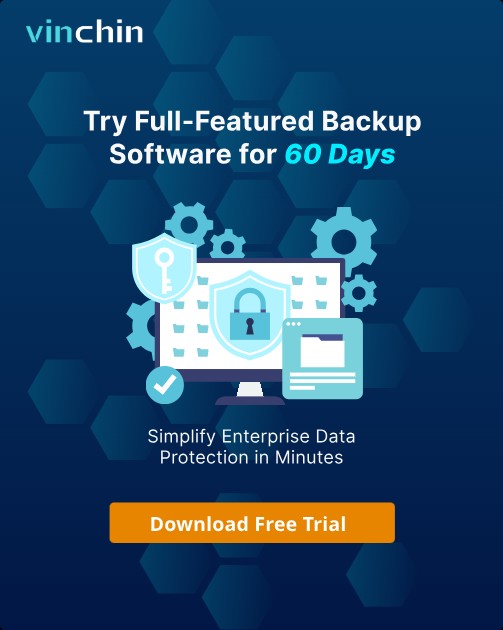-
Components of vSphere Lifecycle Manager
-
Features of vSphere Lifecycle Manager
-
Prerequisites of using vSphere Lifecycle Manager
-
vSphere Update Manager vs Lifecycle Manager
-
Update ESXi 7 to 8 with vSphere Lifecycle Manager
-
Well-rounded protection for VMware
-
VMware vsPhere Lifecycle Manager FAQs
-
Conclusion
VMware vSphere Lifecycle Manager (vLCM) is an alternative lifecycle management tool to vSphere Update Manager (used in versions earlier than vSphere 7.0) that centralizes and simplifies ESXi hosts using images and baselines.
As a service running in vCenter Server, vSphere Lifecycle Manager requires no additional installation and shares the same ability of host patching and upgrade as its predecessor. And not only that, but this lifecycle management tool also enables VM hardware and VMware Tools upgrades.
Components of vSphere Lifecycle Manager
VIBs: the basis of ESXi host installable packages.
Bulletins: one or more VIBs to create vLCM baselines.
Patches: one or more VIBs features, software improvements, and bug fixes.
Roll-up Bulletin: patches that can be deployed easily as a whole.
Extensions: optional components from third-party providers.
Depot: a source of software updates for the Manager with automated software download from the online depot or manual import to the vLCM depot.
Baseline: a group of one or more bulletins, patches, and extensions to be applied to the ESXi hosts or the entire vCenter for the level of compliance.
Features of vSphere Lifecycle Manager
Compliance check: scan ESXi hosts to determine compliance level with baseline and image.
Remediation pre-check: check the cluster health in advance.
Remediation: convert a non-compliant host with an image and baseline to a compliant one.
Staging: reduce the amount of time that ESXi hosts spend in maintenance mode.
Host firmware: update the ESXi host firmware in image-managed clusters.
Images: use an ESXi image to manage hosts rather than baselines for certain “qualified” clusters.
Prerequisites of using vSphere Lifecycle Manager
Single image management: ESXi version: 7.0 and higher; state: stateful; source: from the same vendor with the same hardware; include only integrated solutions.
Baselines and its groups: host patching versions: ESXi 6.7, 7, 8; host upgrade versions: ESXi 6.7, 7.
Change from baselines to an image: cluster requirements for using an image and transition.
Upgrade hardware and Tools: ESXi versions: 6.7, 7, 8.
vSphere Update Manager vs Lifecycle Manager
| vSphere Update Manager | vSphere Lifecycle Manager | |
|---|---|---|
| Source | Install | Embed |
| Upgrade and patch ESXi | Yes | Yes |
| VMware Tools management | Yes | Yes |
| VM hardware versions management | Yes | Yes |
| Third-party software installed on ESXi | Yes | Yes |
| Third-party software and fireware install across clusters | No | Yes |
| ESXi image across the cluster | No | Yes |
| Hardware compatibility | No | Yes |
Update ESXi 7 to 8 with vSphere Lifecycle Manager
1. Log in to vCenter Server, navigate to properties> Updates> Image> Setup Image.
2. Choose ESXi 8.0 from the dropdown list of ESXi Version and click Save.
3. Under the Image Compliance panel, Remediate All hosts.
4. Review Remediation impact window will appear, then click Start Remediation.
5. Wait for the remediation, and you’ll see the host reboot to ESXi 8.0 after the upgrade.
Well-rounded protection for VMware
Data exfiltration threats are everywhere regardless of the host versions or company sizes, backup is the bottom line of data security, which, brings peace of mind in case of data loss. As the technical partner certified by VMware Ready, Vinchin Backup & Recovery is a reliable and trustworthy backup solution for VMware, Hyper-V, XenServer, RHV, oVirt, etc., databases, physical servers, and NAS.
Automatic VMware backup: simplifies VM backup with preset schedules and mail alerts.
Fast VM backup: accelerates backup significantly via HotAdd transmission and CBT-enabled incremental backup.
Cross-platform migration: makes V2V migration from VMware to another host or vice versa much easier without other tools.
Instant recovery: brings a crashed VM back up and running in 15s directly from the backup repository for business continuity.
Offsite backup copy: Vinchin allows users to save another backup copy in another Vinchin center to establish a DR center in an emergency or as a dual-track backup system.
It is easy to create a VMware backup job in its intuitive web console.
1. Select the VMware VM
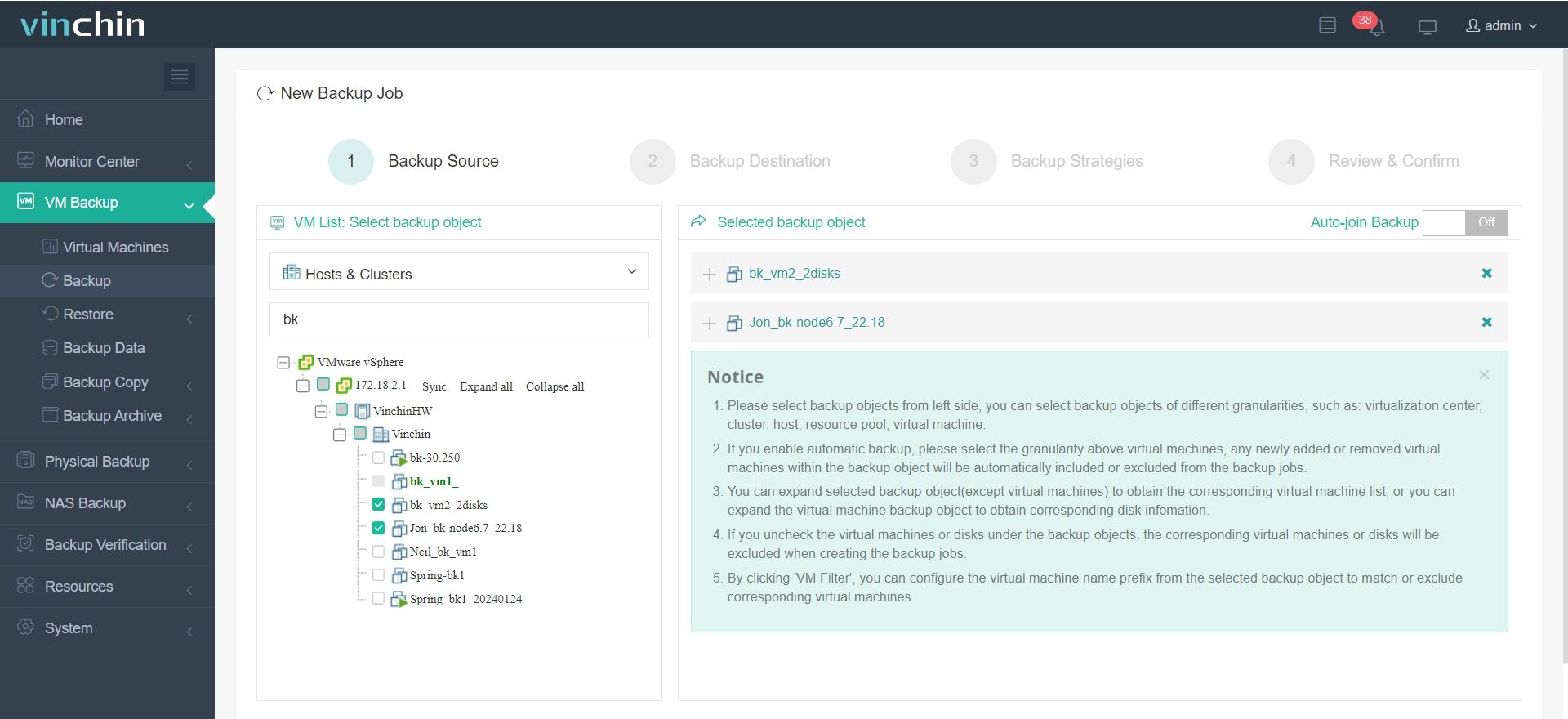
2. Select the backup storage
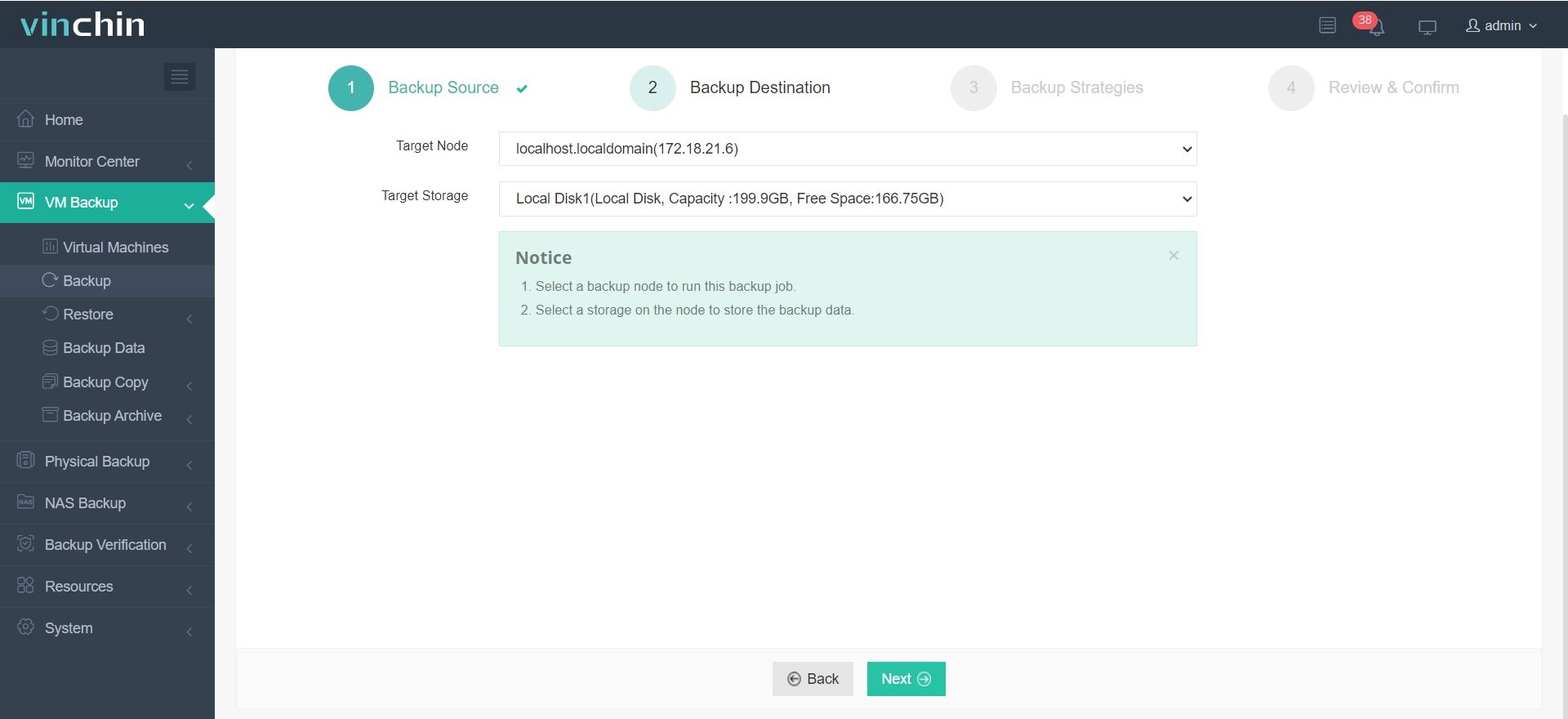
3. Select the backup strategies
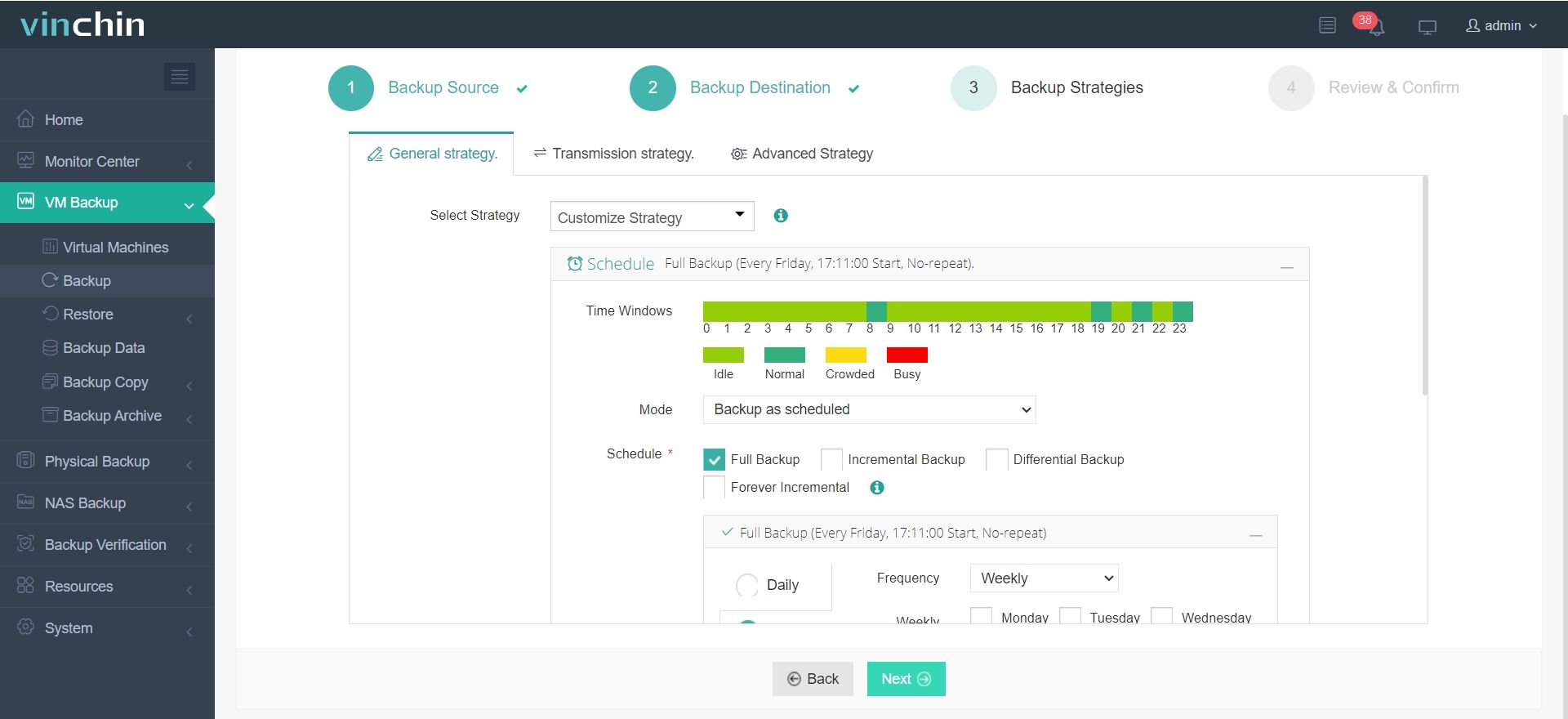
4. Submit the job
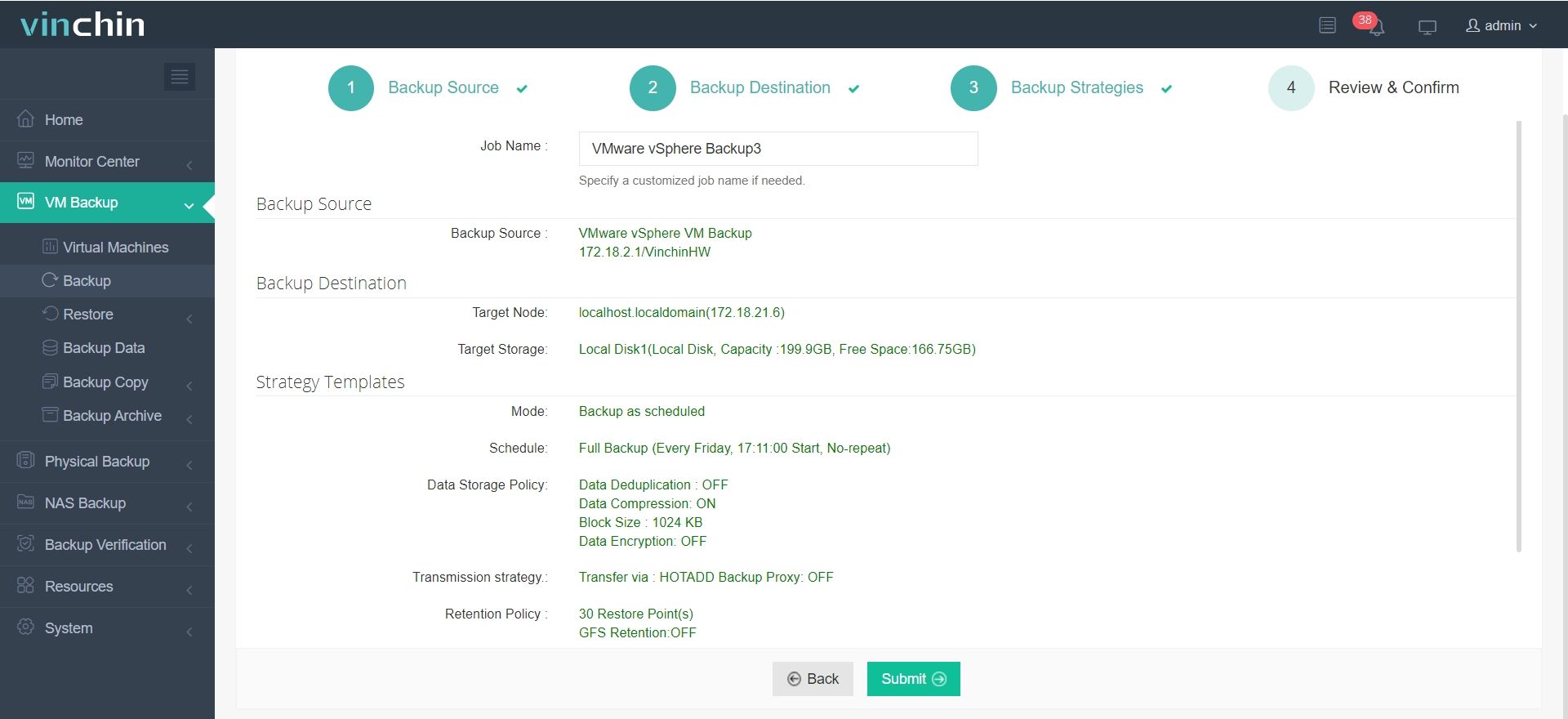
Vinchin Backup & Recovery also secures your data during backup with bank-level algorithm encryption, and after backup it whitelists applications that access the server to prevent ransomware. Here is a 60-day full-featured free trial for you if you are interested.
VMware vsPhere Lifecycle Manager FAQs
Q1: How are firmware and drivers updated via vLCM?
A: vLCM integrates with a registered Hardware Support Manager (HSM) to include firmware, BIOS/EFI, and driver packages in the desired image for cluster remediation
Q2: What happens to VIBs not defined in the image?
A: During remediation, vLCM removes any VIBs, drivers, or vendor add-ons on the host that aren’t specified in the cluster image to enforce uniformity
Q2: How do I switch back to baseline-based management after using an image?
A: Detach the image in the cluster’s Updates settings to revert to baselines, then reassign your baseline groups for host patching and upgrades.
Conclusion
vSphere Lifecycle Manager simplifies the upgrade and patch of ESXi hosts in vSphere and makes lifecycle management easier for users. However, servers and VMs can be corrupted, and VMware backup is certainly a priority. Use Vinchin Backup & Recovery for comprehensive data backup, recovery, and migration.
Share on:





